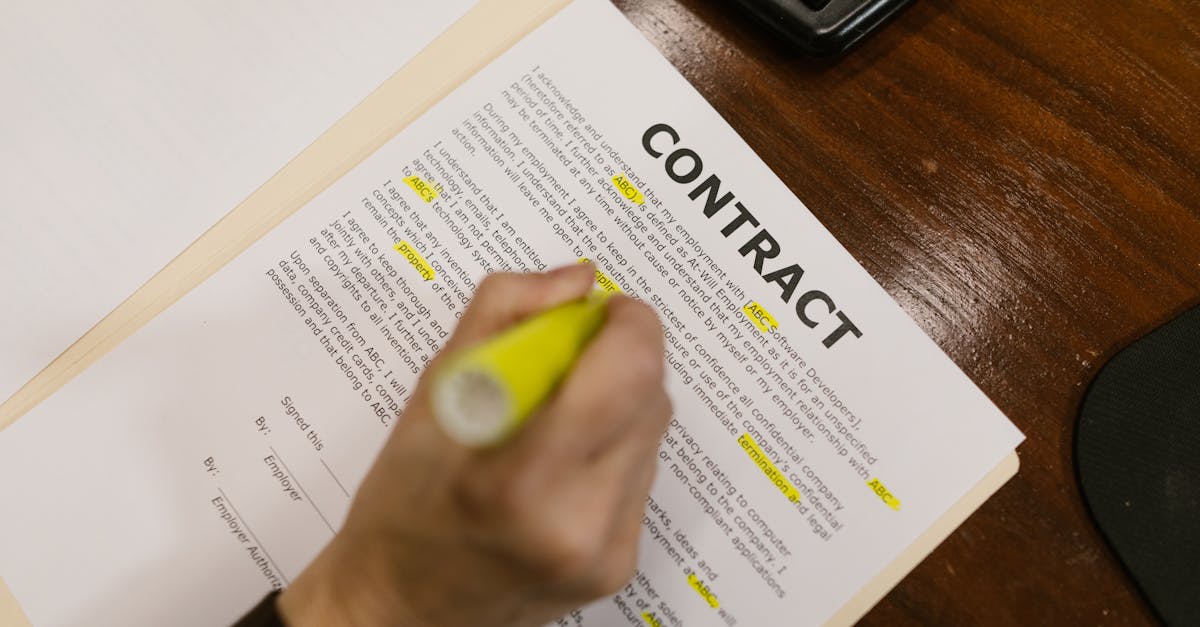
Introduction
Contracts are piling up, deadlines are missed, and the first read of a 50‑page agreement still eats hours of a lawyer’s day. For HR, compliance, and legal ops teams in growing companies, that means slower deals, higher costs, and greater exposure to missed obligations. AI document summarization reduces that friction—turning dense contracts into focused, auditable takeaways that surface obligations, dates, and red‑flags so reviewers can act faster and with more confidence.
What this guide covers: a practical look at how document automation (OCR, NLP, embeddings, and extractive + controlled abstractive pipelines) accelerates review, the workflow to ingest→summarize→tag→route, and how to make summaries actionable with e‑sign, audit trails, and human‑in‑the‑loop controls. Read on for implementation tips, template playbooks, and KPIs that legal teams can use to scale faster while keeping accuracy and compliance front‑of‑mind.
How AI document summarization works for contracts and legal papers (NLP, embeddings, extractive vs. abstractive methods)
Core steps:
AI document summarization for legal texts starts with capture and normalisation: scanned PDFs or images go through AI powered OCR solutions (sometimes via an ai document scanner or ai document scanner app) to produce clean text. Next, natural language processing (NLP) parses clauses, recognizes entities (parties, dates, amounts), and applies sentence segmentation.
Embeddings and semantic search
Sentences and clauses are converted into embeddings — vector representations that let the system measure semantic similarity. Those embeddings power retrieval, contextual prompts, and intelligent document processing features such as clause matching and red‑flag detection.
Extractive vs. abstractive summarization
Extractive methods select important sentences or clauses from the source. They’re faster, more faithful to the original wording, and often preferred for contracts where accuracy matters. Abstractive methods generate new phrasing and can produce concise one‑line takeaways, but they carry a higher hallucination risk and need stronger validation for legal use.
Modern pipelines often combine both: use extractive selection to ensure fidelity, then apply a controlled abstractive rewrite to produce a readable executive summary.
Where document AI and intelligent document processing fit
Document AI and document ai platforms orchestrate OCR, NLP, embeddings, and business rules into an intelligent document processing flow. That stack also enables related features like ai document summarization, automated tagging, and integration with downstream systems (contract repositories, e‑sign, matter management).
Key benefits for legal teams: faster review cycles, reduced billable hours, consistent summaries for non‑lawyer stakeholders
Faster review cycles. AI summaries turn long contracts into focused lists of obligations, deadlines, and risks so lawyers spend less time on first reads. That accelerates triage and decisioning.
Reduced billable hours and cost predictability. By automating routine summarization and clause extraction, senior lawyers can focus on negotiation strategy rather than page‑by‑page reading — lowering hours billed for repetitive work.
Consistent summaries for non‑lawyer stakeholders. Automated summaries create repeatable outputs that business teams can understand: key dates, notice periods, termination triggers, and payment schedules. This reduces back‑and‑forth clarifications.
- Improved risk spotting: AI highlights unusual clauses, conflicting terms, and missing protections.
- Better knowledge capture: Extracted metadata feeds a searchable contract index, improving reuse and compliance.
- Scalability: Handle large volumes (due diligence, vendor onboarding) without proportional headcount increases.
Designing an automated summarization workflow in Formtify: ingest → summarize → tag → route
Ingest. Capture documents from email, uploads, or an ai document scanner app. Apply OCR, normalize formats, and store the source in your ai document management system.
Summarize. Run a two‑step pipeline: extractive clause selection (to guarantee fidelity) followed by a constrained abstractive pass for an executive summary and bullets. Use embeddings for relevance ranking and to support queryable summaries.
Tag. Automatically assign metadata: contract type, effective date, renewal window, indemnities, and other risk flags. Tags drive routing and reporting.
Route. Use tags and business rules to route documents to the right reviewer, approval queue, or external counsel. Integrate routing with e‑sign and checklist automation so the summary becomes an actionable record.
Operational tips
- Persist both source text and generated summary to support audits.
- Expose the extraction confidence score and a short rationale to help reviewers decide whether human review is needed.
- Use ai document processing tools that let you swap models or tune prompts per contract type.
Use cases and examples: pre‑signing summaries for NDAs, executive one‑page briefs for M&A due diligence, litigation memo extraction
Pre‑signing NDA summaries. Before signing, surface the counterparty, key obligations, non‑compete or non‑solicit windows, termination clauses, and data handling requirements. Link the summary to the original NDA so business owners can sign with confidence. (See a Formtify NDA template: https://formtify.app/set/non-disclosure-agreement-3r65r.)
Executive one‑page for M&A due diligence. Aggregate material contracts into digestible briefs: change‑of‑control clauses, assignment rights, exclusivity, and termination penalties. Use the briefs to inform LOIs and integration plans.
Litigation memo extraction. For discovery or litigation hold, extract timelines, witness mentions, indemnities, and limitation of liability text into a litigation memo. That speeds evidence review and deposition prep.
Other examples:
- Vendor onboarding: summarize service levels and payment terms from service agreements (see: https://formtify.app/set/service-agreement-94jk2).
- Pre‑hire contract checks: summarize restrictive covenants from employment agreements (see: https://formtify.app/set/employment-agreement—california-law-dbljb).
- Software procurement: extract deliverables, milestones, and IP clauses from development contracts (see: https://formtify.app/set/software-development-agreement-jm656).
For quick experiments, teams sometimes try an ai document summarizer or an ai document generator free trial to validate value before productioning the pipeline.
Integrating summaries with approvals, e‑sign, and audit trails to drive downstream automation
Make summaries actionable. Turn the summary into structured review checklists and conditional approvals. For example, if a summary flags a non‑standard indemnity, route to senior counsel; if it’s standard, auto‑route to business sign‑off.
E‑sign and post‑sign workflows. Attach the summary to the signing packet so signatories see the key points before e‑signing. After signature, store summary + signed PDF together to maintain context.
Audit trails and compliance. Persist who reviewed the summary, approvals, and any edits. That audit trail supports internal compliance, external audits, and regulatory requirements.
Automation triggers
- Tag = “auto‑renew” → create calendar reminder and renewal approval task.
- Tag = “high risk” → require two‑step legal approval before send‑out.
- Signed contract → kick off onboarding playbook and post‑sign notifications.
These integrations let summaries drive the next tasks instead of being passive notes.
Template playbook: which Formtify templates to prioritize for summarization and automation
Prioritize templates that are high‑volume or high‑risk. Start with a small set and expand as you validate accuracy.
- NDAs — fast wins for pre‑signing checks and business approvals. (Formtify NDA: https://formtify.app/set/non-disclosure-agreement-3r65r)
- Service agreements — extract SLAs, termination, payment and liability clauses to automate vendor onboarding. (Service template: https://formtify.app/set/service-agreement-94jk2)
- Employment agreements — summarize restrictive covenants, severance, and compliance items for HR workflows. (Employment template: https://formtify.app/set/employment-agreement—california-law-dbljb)
- Software development agreements — prioritize milestones, IP assignment, and acceptance criteria to sync product and legal teams. (Software dev: https://formtify.app/set/software-development-agreement-jm656)
Other useful candidates: vendor contracts with recurring payments, reseller agreements, and MSA schedules. For each template, define the minimal metadata you need (effective date, parties, renewal, key obligations) and train/validate the extraction accordingly.
Implementation checklist: quality checks, human‑in‑the‑loop review, retention and versioning policies
Pre‑deployment quality checks
- Validate OCR accuracy on representative documents (scans, redlines, handwritten notes).
- Create a golden‑set of annotated contracts to measure extraction recall/precision.
- Benchmark extractive vs. abstractive outputs for fidelity.
Human‑in‑the‑loop (HITL)
- Set confidence thresholds: low confidence → require human edit before use.
- Design review UIs that surface source text, extracted fields, and highlighted rationale.
- Log reviewer corrections to continuously retrain models and improve prompts.
Retention, versioning, and audit
- Store original file, OCR text, extracted metadata, and each generated summary version.
- Maintain immutable audit logs showing who changed what and when.
- Define legal hold and retention periods aligned with corporate policy and regulators.
Security and compliance — ensure encryption at rest and in transit, role‑based access, and data residency controls if required by governing law.
KPIs to measure success: time‑to‑review, reviewer accuracy, reduction in redlines and turnaround time
Measure outcomes that matter to legal operations and the business.
- Time‑to‑review: average time from document ingest to completed first‑pass review. Target: reduce by 50% in early phases.
- Reviewer accuracy: percent of AI summaries that require no material edits by a lawyer. Track by contract type.
- Reduction in redlines: compare negotiated redlines on contracts that used AI summaries vs. those that didn’t to see if summaries improve initial drafts.
- Turnaround time: end‑to‑end TAT for approvals and signing, including routing delays.
- Cost per summary: total automation costs divided by number of processed contracts to justify ROI.
Operationalize these KPIs in dashboards and tie them to specific process changes (e.g., new routing rules, confidence thresholds). Over time, use KPI trends to decide when to expand coverage and when to tighten human review.
Summary
AI document summarization brings OCR, NLP, embeddings, and controlled extractive‑then‑abstractive pipelines together to turn lengthy contracts into focused, auditable takeaways that surface obligations, dates, and red flags. For HR, compliance, and legal‑ops teams, that means faster first‑passes, fewer repetitive billable hours, consistent outputs for non‑lawyer stakeholders, and actionable summaries that feed routing, e‑sign, and post‑sign automation. Preserve source text, confidence scores, and reviewer edits to keep accuracy and defensibility high while scaling review capacity. Ready to accelerate your contract workflow? Visit https://formtify.app to get started.
FAQs
What is an AI document?
An AI document is a digital record that’s been processed with AI tools to extract structure and meaning — for example, OCR to turn scans into text, NLP to identify clauses and entities, and metadata for routing. The output is a searchable, taggable asset that teams can use to summarize obligations, set reminders, or drive approvals.
How does AI document processing work?
AI document processing typically starts with OCR to capture text, followed by NLP and entity extraction to identify parties, dates, and clauses. Embeddings and semantic search help rank relevance, while extractive methods preserve fidelity and constrained abstractive passes produce readable summaries; business rules and HITL controls ensure accuracy and proper routing.
Can AI summarize long documents?
Yes — modern pipelines use extractive selection to pull high‑value clauses and then optionally apply a controlled abstractive rewrite for an executive summary, which lets teams get concise takeaways without losing fidelity. For legal use, adding confidence scores and human review thresholds helps manage hallucination risk and maintain defensibility.
Is AI document processing secure?
When implemented correctly, AI document processing can meet enterprise security standards: encryption at rest and in transit, role‑based access controls, and data residency options. Combine those controls with audit logs, versioning, and retention policies to satisfy compliance and regulatory requirements.
Which industries use AI document solutions?
AI document solutions are used across legal, HR, finance, procurement, healthcare, real estate, and tech — anywhere teams need to extract clauses, automate approvals, or summarize high volumes of paperwork. High‑volume and high‑risk workflows like vendor onboarding, M&A due diligence, and employment agreements tend to see the fastest ROI.





